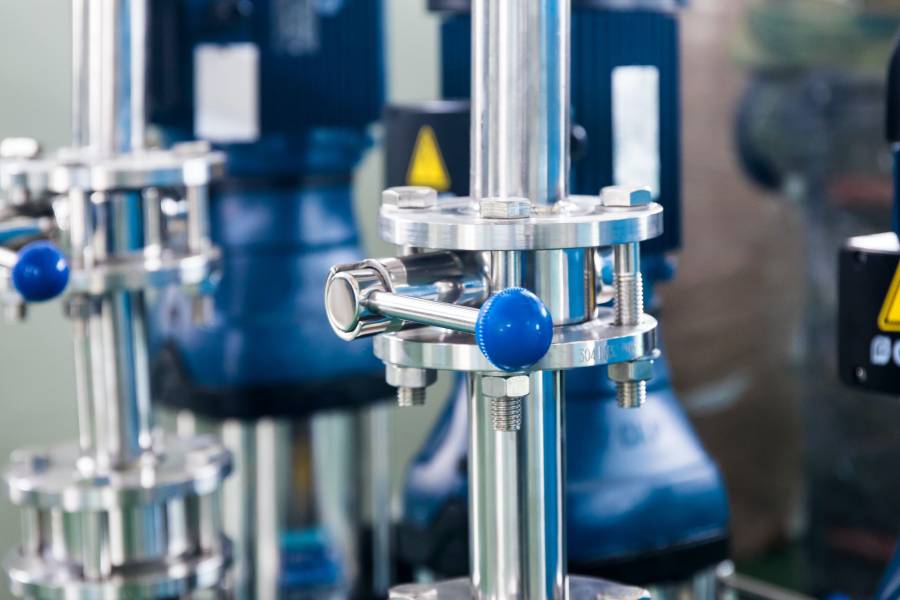Collaborative robots, or cobots, are key to manufacturing automation, as they were initially developed to help humans in laborious and repetitive tasks. Today’s cobots can do everything from lifting objects weighing hundreds of kilograms, to learning on the job. These robots are increasingly empowering human workers by enabling them to undertake higher-value tasks that require problem solving abilities and advanced cognitive skills.
This article discusses five different ways that collaborative robots (or cobots) help human workers execute their jobs more efficiently in the manufacturing industry.
The following are the top five ways that collaborative robots empower humans:
Remove Monotonous Tasks
There are many examples of how the use of cobots have helped remove monotonous tasks from the workplace, thus allowing employees to work on more value-added activities that can help businesses gain a competitive advantage.
A good example is the BMW Group that has seen top line contributions in just two years of implementing cobots in its production lines. The company has already removed 50% of heavy lifting operations from their assembly line with the use of collaborative robots, and they plan to automate more tasks, with most employees moving towards working on higher value tasks like research and development (R&D), problem solving, etc. Additionally, studies have shown that human workers who are tasked to work alongside with cobots experience less fatigue, which allows them to remain more productive for longer periods of time.
Improve Safety Standards
According to Visitcompletecare.com, the most common workplace injuries include contact with equipment, among others. This is where collaborative robots come in to improve safety standards for workers by taking over potentially dangerous tasks that can lead to injuries.
Safety standards have greatly improved with the use of cobots because these machines never get tired or distracted and are thus designed not to cause any harm to human workers. For instance, a robot working on an assembly line only needs to stop operating when it faces a mechanical defect or has run out of power. In addition, companies have reported reductions in workplace incidents due to the use of cobots, which also helps bolster their reputation as a safe place of work.
Improve Efficiency Levels
One common problem faced by many manufacturers is production line downtime, which can be caused by a variety of factors such as broken components, machine malfunctions, etc. This leads to increased costs and lost revenue, but can be avoided with the use of cobots, because as machines, they do not need breaks or time off.
In one study, researchers noted that cobots were programmed to monitor production lines and send alerts when there is any problem in operation. When this happens, human workers simply take over the task at hand while the robot does its job and then returns to work once it has been repaired or replaced. This means that the overall efficiency levels on the assembly line are improved, and businesses enjoy increased productivity from their workforce even during down times.
Improve Quality Levels
Collaborative robots have also been shown to improve quality levels in several manufacturing plants. Unlike human workers who can get bored or become lax over time, these cobots are programmed to track the quality of every task they perform. Therefore, when a robot encounters a defective component, it automatically alerts the operator and stops the entire production line until the issue has been resolved.
This means that businesses enjoy reduced costs caused by faulty products because there is no need for employees to rework on defective materials, saving companies precious time and money. In addition, this also reduces waste, which helps lower operational costs while also helping protect the environment.
Empower Employees with New Skill Sets
The use of cobots does not mean that humans lose their jobs; instead, these machines enable employees with new skill sets and higher value-added tasks that help keep them relevant in the workplace (and even more importantly, it keeps them employed). Companies actually find that their workers become more engaged with their work when they are not bogged down by monotonous or dangerous tasks.
In addition, studies have shown that human workers enjoy better working conditions after the implementation of cobots because these machines do all the heavy lifting, thus allowing for longer periods of productivity at work. The benefits of collaborative robots extend beyond improved worker safety; companies also benefit from improved quality levels and increased efficiency due to improved processes.
The advent of cobotics has empowered humans in many ways, allowing businesses to retain its workforce while still improving productivity levels across all operations. Collaborative robots have the ability to perform nearly any task on an assembly line while never tiring out or getting distracted, leading to more efficiency and improved quality levels across all operations.
Collaborative Work in the Manufacturing Industry
Collaborative robots are used across several industries to help improve production levels while also helping workers execute their jobs more efficiently. Cobotics can help manufacturers reduce workplace injuries, increase efficiency during downtime, and improve quality standards—all without harming human employees. Not only will this lead to increased profits for businesses, but it can also empower their employees with new skill sets that keep them relevant in the workplace. Collaborative robots are changing manufacturing automation as we know it by making companies more profitable and keeping humans safer at the same time!
Techman Robot is here to help your business succeed in the manufacturing industry through cobot applications. Visit our blogs for more on cobot technology, manufacturing automation, and Industry 4.0.
Don’t hesitate to send us a message for any questions.

